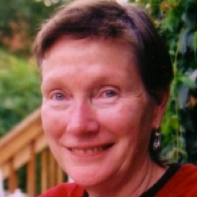A review of Open Heart, Open Mind by Tsoknyi Rinpoche.
Although Tsoknyi Rinpoche has written two books for advanced meditators—Fearless Simplicity and Carefree Dignity—his latest book addresses what he calls the well-being of the subtle body relevant to all meditators.
Rinpoche has taught Westerners for some time, and has noticed a couple of things. First, although we are strong cognitively, our meditation tends to remain conceptual, and second, we tend to have a “feeling problem” because we have been raised to disregard emotional health, what he calls “essence love.”
Rinpoche describes three main areas of the individual through rich examples of his own triumph over fear and his students recognition that they are emotionally stuck. The three main areas of the individual are: the gross body, the subtle body, and the mind.
By working with healthy lung (Tibetan for wind or breath), Rinpoche proscribes how to reverse the dangers of subtle body speed. This step is part of the initial path of the buddhadharma and often skipped over by Westerners ambitious to get into more advanced teachings.
But the Buddha presented this part of the path in his first teachings, The Four Foundations of Mindfulness, especially in the Third Foundation, Mindfulness of Feeling.
Rinpoche emphasizes that we must become healthy human beings before we can become enlightened. He says it is fine to be speedy in the gross body, to run and be active and to have a swift mind.
The danger comes when the subtle body feeling is going faster and is not in tune with what the gross body can do. This state is where anxiety and disorder occur, which creates many chronic diseases.
To avoid tiredness and burn out, which occur in the subtle body’s lung, we must be mindful of this “inner speed limit.”
Without getting into working with the nadis (channels or nerves) or bindu (mind essence), Tsoknyi Rinpoche presents these teachings as part of the vast path, which leads to well-being, but not to complete liberation.
For enlightenment, one needs the profound path: renunciation, understanding emptiness and absolute bodhicitta and receiving lineage blessing so to practice with devotion and commitment.
A traditional concept is that the mind is the rider and the lung is the horse. So the mind needs to ride a healthy lung, not a wounded one. Through what Trungpa Rinpoche would call “loving kindness” the lung can relax into harmony with the mind and gross body.
This harmony then is the basis of the profound path.
Another wonderful exploration within the book is a study of the difference between “mere I,” “reified I,” “needy I” and “social I,”
The harmony established between the mind, gross body and subtle body leaves one with a fluid, healthy, functional ego or “I,” like the one we use in speech: “I’ll see you tomorrow.”
“Reified I” is solid and more serious because it has frozen “mere I:” I am an accountant, a jazz musician, a health care worker. There’s no problem with these roles as long as one sees them as one’s job, a hat one wears, and does not confuse it with the “mere I.”
“Needy I” wants constant confirmation and is self-cherishing: “It’s all about me.”
And “social I” is the persona one accumulates in the world, like actors who blur the image of themselves with “mere I.”
Gently deconstructing the “social, needy and reified” aspects of ego transforms emotional blockages by restoring “mere I” with its healthy subtle body lung.
Open Heart, Open Mind provides a bridge between ancient wisdom and modern life.
The language in the book is user friendly and replete with humor. The author, while supporting nunneries in the East and teaching in the West, is a married lama and father of two daughters, giving him experience understanding relationships and matters of both the heart and the mind.
~
Editor: Lara Chassin

 Share on bsky
Share on bsky


Read 6 comments and reply